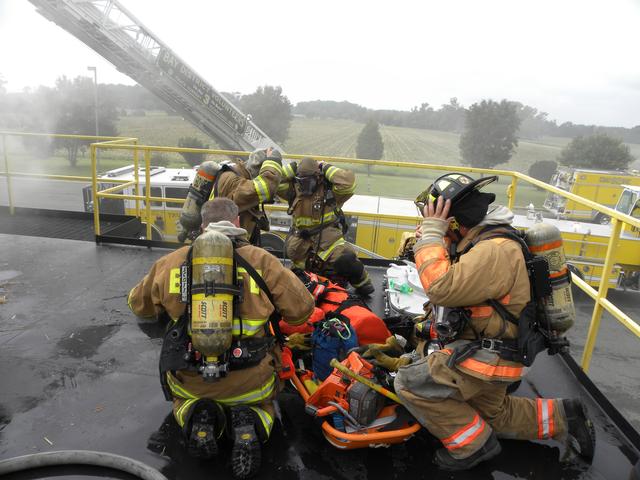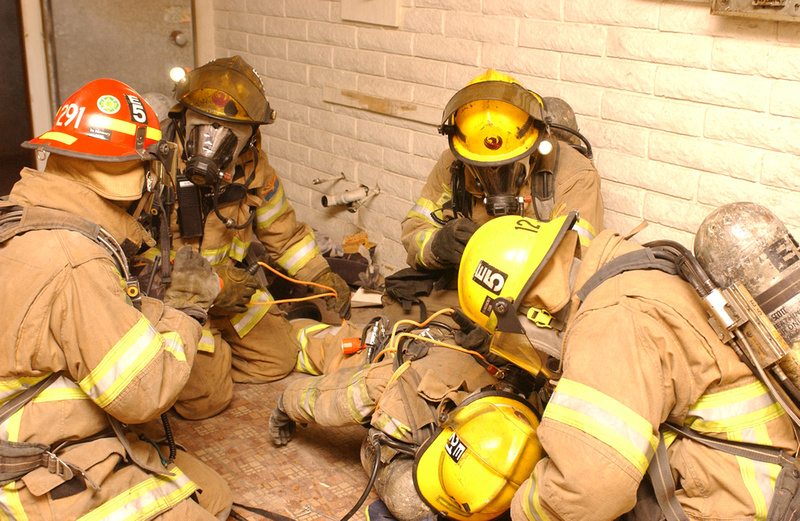By: Robert Avsec, Executive Fire Officer
Read a great piece, and even better guidance and direction, on this critical issue from my fire service colleague and Situational Awareness Matters guru, Richard Gasaway!
I recently was contacted by a fire officer asking whether their mayday procedure should include a provision for a dedicated mayday channel for the distressed crew to transmit their post-mayday traffic on. This is a question I’ve been asked often enough that I want to dedicate an article to the topic of mayday communications procedures.
Rich Gasaway from post on LinkedIn, July 5, 2019
The Basics of RIC

NFPA 1710: Standard for the Organization and Deployment of Fire Suppression Operations, Emergency Medical Operations, and Special Operations to the Public by Career Fire Departments specifies what both the Initial Rapid Intervention Crew (IRIC) and Rapid Intervention Crews (RIC) are within the overall incident management system.
At a minimum, an initial rapid intervention crew (IRIC) assembled from the initial attack crew and, as the initial alarm response arrives, a full and sustained rapid intervention crew (RIC) consisting of one officer and three members.
NFPA 1710, Section 3.3.53.1
A Rapid Intervention Crew [consists of] a dedicated crew of at least one officer and three members, positioned outside the IDLH [Immediately Dangerous to Life and Health], trained and equipped as specified in NFPA 1407 who were assigned for rapid deployment to rescue lost or trapped members.
NFPA 1710, 3.3.53
What? You didn’t know that there is specific training for a firefighter to be considered RIC-qualified? Well there is and it’s all listed in NFPA 1407: Standard for Training Fire Service Rapid Intervention Crews (2015 Edition)
If you’ve not read Gassaway’s post yet, now would be a good time to do so (Otherwise most of what follows here will not make a great deal of sense).
Training for RIC in “big box occupancies”
We conducted such training (keeping distressed firefighter and IC on the initial radio channel and moving everyone else to a different channel) when I was serving with the women and men of the Chesterfield (Va.) Fire and EMS Department.
We not only trained on the Mayday procedure (as discussed by Gassaway) but also trained on the concept of a RIT task force (Engine, truck, and ambulance) for use at operations involving large commercial structures.
Circa 2005 we had access to a vacant Best Products store (Two story, non-combustible building of roughly 40,000 sq. ft. per floor). The initial “response” was three engine companies, one truck company, two ambulances, and two battalion chiefs (Our actual commercial structure fire response was four engines and two trucks, but in this training scenario where we could only have so many units committed to the exercise, one engine and one truck and one ambulance would be used in another role. More on that later).
The scenario
The fire was reported to be in the showroom on the first floor towards the back of the building. Once all the units from the initial alarm were committed to tactical objectives by the incident commander (IC), the training instructors selected one firefighter inside the structure to declare a Mayday.
Once the Mayday declaration happened, personnel followed a training script for the remainder of the exercise:

- The IC declares “Emergency Traffic” clearing all radio traffic on the radio channel;
- The IC attempts to make direct radio contact with the firefighter in distress;
- Once radio contact is made the distressed firefighter provides a LUNAR (Location, Unit, Name, Assignment and Resources needed) report to the IC;
- The IC confirms to the distressed firefighter that they (the IC) is going to remain on this channel with them;
- The IC directs all other operational units to move to a designated channel where the Operations Section Chief (OSC) will be in command.
- The OSC requests a PAR (Personnel Accountability Report) from each operational unit to ensure: (1) personnel accountability and (2) that everyone except the IC and the distressed firefighter has moved to the new operational channel.
Bigger buildings need bigger RIC
Because the reality is that even a four-person RIT is not adequate when dealing with large structures. The RIC Task Force (RTF) must be mobile and self-sufficient with tools and apparatus. Just like the RIT at a residential structure fire–only BIGGER!
For the training exercise, we used one engine company, one truck company, and one ambulance to form the RTF. The RTF Leader kept the units in an uncommitted position on the emergency scene where it could deploy in 60 seconds or less.

Uncommitted however did not mean that the RTF was not working. The RTF did engage in proactive tasks as directed by the IC until the Mayday was declared. Those tasks included opening exterior doors providing additional means of egress for firefighters operating in the structure; it also provided better access for the RTF if needed.
When the Mayday was declared, the OSC directed the RTF to the best point of access based upon the LUNAR report from the distressed firefighter. The combined resources of the RTF gave the RTF the ability to execute any tasks necessary (forcible entry, fire stream protection, rescue equipment, and EMS) to reach and retrieve the distressed firefighter.
Over a period of about three weeks, we rotated every one of our career staffed fire companies (20 engine companies, five truck companies, and 14 ambulances) and all of our battalion chiefs (including those who were in staff assignments at the time) through the sessions.
It was a fantastic learning experience for everyone involved and it gave everyone their first experience of working a Mayday event within the context of a simulated emergency involving all the fire companies that would be assigned.
Read Related: Connecting RIT and ICS
Are you a pre-certified Firefighter/EMT? Looking for a fire service career, not just a fire service job? Then I encourage you to check out this new listing from the fire and EMS department where I served for 26 years before retiring at the rank of battalion chief. You won’t be sorry you did!
 Fire & EMS Leader Pro The job of old firefighters is to teach young firefighters how to become old firefighters!
Fire & EMS Leader Pro The job of old firefighters is to teach young firefighters how to become old firefighters!